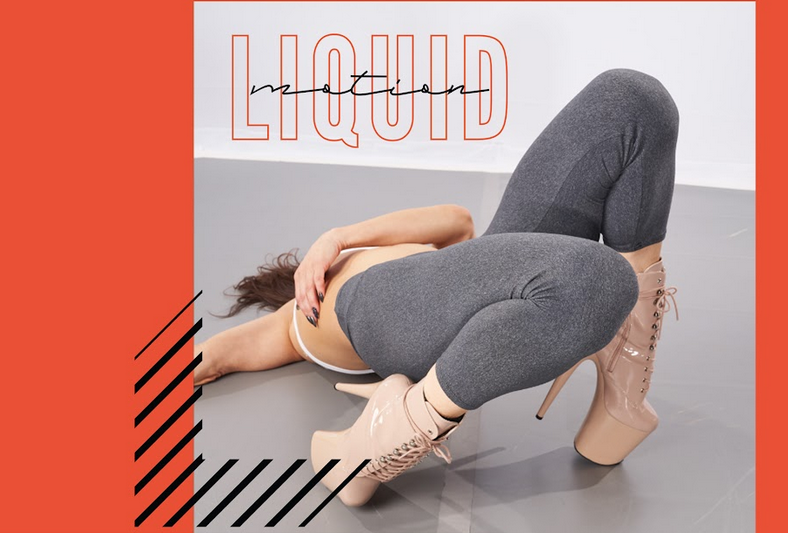How Should They Fit?
You want your shoes to fit very snugly. How snug will vary from person to person, depending on the shape and size of their foot. While you do not want the shoe to cut off circulation, it should be tight enough that you aren’t able to slide any fingers between your straps and your foot.
We do not endorse ankle support products, as nothing in this manual will require that kind of excessive support. This is our preference at Liquid Motion®, and these products are not allowed in your training, unless you have an injury. Ankle boots also give you a very false sense of security and will hinder the strengthening of your ankles. However, when training for an extensive length of time, one might consider using an ankle boot if not wearing a shoe is not an option. But generally, we feel if you can’t keep the ankle stable in your shoe, then you need to go to a lower heel height or think about whether you are truly ready to dance in platform stilettos.
What kind of shoe should I buy?
There are many different brands one can choose from; we do not endorse any one brand. You should try on a variety of styles and brands, as they all use different materials and fit differently. You are most likely going to blow some money until you find your perfect fit, and even then, you will blow through lots of shoes. Like any piece of equipment, it will be a continuous investment for you.
Where should I buy my shoes?
We don’t recommend buying your shoes from the HUGE online companies. Large companies that stock thousands of shoes do not always store overstock in the best conditions. Like anything else, the materials will break down over time, and sometimes break or even crack after just a few uses. (This also applies to how you store your shoes in your own home.) We recommend buying your shoes directly from the manufacturers or a smaller third party that has a very high turnover rate. This way, you know you are getting newer shoes that are made with the most up-to-date materials. If something feels off, you should call the manufacturer directly, as they might have changed something in the design.
What should I look for when buying a shoe?
Your dance shoes should NOT fit like a street shoe. The activity you are doing in this footwear is completely different from your normal routine. As you break in your shoe, the straps will stretch out and start to loosen. The most common mistake people make is tightening the strap too much and breaking the lifeline. You may want to consider going down a size from your street shoe.
Don’t be fooled. There is no such thing as a half shoe size when it comes to platform stilettos (as of yet in the USA). If it says that on the website, it’s because they are measuring from a different point.
There is no standardization when it comes to sizing this type of shoe.
The first thing to consider is what you are going to be using it for. For those who will be doing a lot of upright dancing, 6-inch heels are perfect. The heel height is safe for beginners and will still give you a very different feeling than a regular street shoe.
For floor work, you have a little more leeway. We recommend a 7-inch heel to start. A 7-inch heel will give you about a 3-inch toe box. This is ideal for Clacking, Dragging and Threading. However, the 8-inch heel has an approximately 4-inch toe box and a slightly larger lip. This extra real estate gives you more stability when Staking and Undercutting, and yes – the bigger the box, the louder the clack. The 8-inch heel is also heavier. You will find that extra weight is not a bad thing; it actually makes for better use of momentum.
Closed toe ankle boots are great, as they protect your toes. This is important, as many people’s toes will hang over the tip of the shoe. Even with some techniques you will learn later, this may still be an issue. In that case, we do recommend trying a closed toe boot. Ankle boots will also give you extra ankle support, and you can even wear socks for a snugger fit. The downside of that is you will not build the much-needed ankle strength to perform more advanced techniques. Ankle boots should really be used in conjunction with a regular pair of platform stilettos.
Vinyl thigh high boots are fun, but they stick to everything, including themselves. Many people like to wear them to help stick to the pole, but that is not what they are designed for. They will rip apart almost instantly. These shoes are simply for fashion purposes.
To start, you may want to get a shoe with a D (sometimes called U) shape heel. This is referring to the actual tip of the stiletto heel. This type of heel shape provides more stability when standing.
You want a plastic compound shoe. Materials used to create the heel design include polycarbonate, PVC, Lucite and acrylic resin. We recommend vinyl straps, but you can also find them in leather.
Like this content? Learn more about how to walk, dance and teach in platform stiletto shoes in our Heels Certification! Sign up now.

